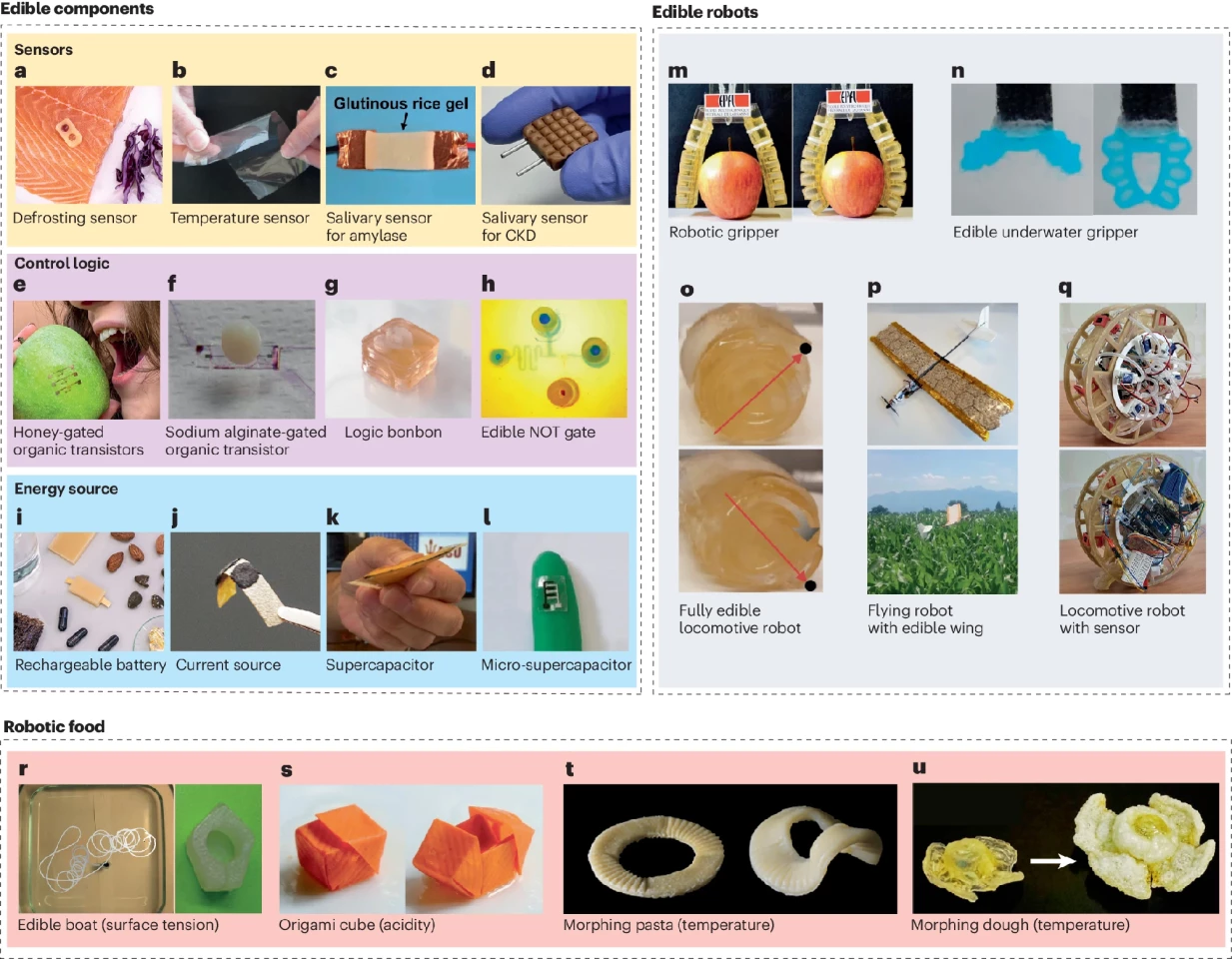Imagine ordering drone delivery for your takeout, and then, after eating your food, you eat the delivery drone for dessert. The first part has been happening for a while; the second – the edible robot – could be coming soon, according to scientists from the Swiss Federal Institute of Technology (EPFL).
“Bringing robots and food together is a fascinating challenge,” said Dario Floreano, director of the EPFL’s Laboratory of Intelligent Systems (LIS) and the lead author of a recently published perspective article that considered how far we are from the reality of edible robots. “We are still figuring out which edible materials work similarly to non-edible ones.”
At first glance, food and robots appear to be at opposite ends of the scientific spectrum. But, according to the article’s authors, edible robots are not just a novelty you’d pay a ridiculous amount of money to see on a plate at a high-end restaurant. They have a wide range of potential applications in areas like human health and nutrition, wildlife preservation and animal welfare, and the environment.
There’s so much potential in edible robots that, in 2021, Floreano joined with Remko Boom from Wageningen University in The Netherlands, Jonathan Rossiter from the University of Bristol, UK, and Mario Caironi from the Italian Institute of Technology (IIT) to launch the RoboFood project, receiving backing in the form of EU funding to the tune of €3.5 million (US$3.75 million) over four years.

According to the RoboFood website, the project’s “overarching objective” is “to lay the scientific and technological foundations for the development of truly edible robots and robotic food. To that end, let’s look at the development timeline for edible robots, which, like most tech-related things, is advancing at a rapid pace.
In 2017, EPFL scientists created a gripper capable of handling an apple made from two fully edible actuators. The actuators were themselves made of gelatin-glycerol material with mechanical characteristics like those found in silicone elastomers.
EPFL and Wageningen scientists designed a fixed-wing drone with wings made from puffed rice cakes glued together with gelatin in 2022. Granted, only the drone’s wings were edible, but it flew at a speed of 33 ft (10 m) per second and could carry 50% of its own mass as an edible payload.
In 2023, IIT researchers created an edible rechargeable battery by making an anode out of riboflavin (vitamin B2) and a cathode from quercetin, a health-promoting natural pigment found in red onions, capers and kale. Activated charcoal increased conductivity, while nori seaweed – the stuff that’s usually wrapped around your sushi rolls – was used to prevent short circuits. Packaged with beeswax, the battery operated at 0.65 volts, still a safe voltage for ingestion; two connected in a series powered an LED for about 10 minutes.
In 2024, scientists from the University of Briston, IIT, and EPFL created the first edible strain sensor based on electronic conduction. The key is a novel conductive ink, a combination of activated carbon, Haribo gummy bears, and a water-ethanol mix. When the ink is sprayed on an edible substrate, both can be eaten.

“There is a lot of research on single edible components like actuators, sensors, and batteries,” said Bokeon Kwak, a RoboFood team member and one of the perspective paper’s co-authors. “But the biggest technical challenge is putting together the parts that use electricity to function, like batteries and sensors, with those that use fluids and pressure to move, like actuators.”
In their paper, the researchers lay out the challenges currently facing the realization of edible robots. Existing edible actuators and batteries still have lower power, endurance, and reliability compared to their non-edible counterparts, or they require the use of non-edible parts. Another challenge is that although many edible components are made from things we normally eat, further studies are needed to see how they interact with the digestive system. And then there’s miniaturization, making the robots small enough to be a single, swallowable entity. Finally, edible robots ultimately must serve some purpose.
So, what purposes do the researchers foresee them performing? The examples they give in their paper include analyzing the digestive tract and precisely delivering drugs, maneuvering down the esophagus to remove food blockages, providing nutrition to humans and animals, preserving the health of wild and domesticated animals – including administering vaccines, environmental monitoring, and, of course, providing a novel culinary experience. Because edible robots would also be biodegradable, they’re greener than the alternative.
An important question requires an answer: How will people react to eating a robot? Some answers were provided by a 2024 study where researchers gave participants robots made from sugar and gelatin – one moving, one not – and gauged their perception and taste experience. They found that the moving robot was perceived as a ‘creature’, whereas the stationary one was ‘food.’ However, movement imparted greater taste.
The moving robot was frequently described as ‘sweet,’ and participants mentioned specific tastes, such as ‘apple,’ compared to the non-moving robot, which was referred to by its constituent components, suggesting participants believed the moving and non-moving robots were made of different materials. In addition, when chewing on a moving robot, participants described noticeably different textures to when the robot wasn’t moving. One possible explanation offered by the researchers is that participants attributed lifelike qualities to the robot when it was moving; it was more ‘alive.’
The authors of the current paper haven't speculated about when we might see edible robots on our plates. While the aforementioned technical hurdles still need to be overcome, we probably won't have to wait long, given the break-neck speed with which technology is advancing.
The article was published in the journal Nature Reviews Materials.
Source: EPFL







